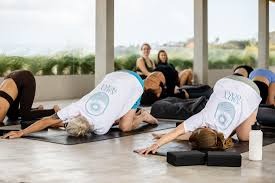200-hour certification is one of the most popular yoga teacher training programs. The certificate feels official in your hands. But doubt creeps in. Are you really ready to guide other people through yoga practice?
The honest answer is complicated.
What 200 Hours Actually Cover
Your certification program packed anatomy, philosophy, and teaching methods into those hours. You learned basic poses, fundamental alignment, and simple sequencing. The curriculum covered breathing techniques and meditation basics too.
Yoga teacher training in Bali programs typically include practical teaching experience within those 200 hours. You practice instructing fellow trainees in controlled environments. These sessions build initial confidence but differ dramatically from real class settings.
Most programs dedicate significant time to yoga history and philosophy. While intellectually interesting, this knowledge doesn’t directly translate to teaching skills. You might know Sanskrit pose names but struggle to explain proper knee alignment.
The mathematics are sobering when you break them down. Two hundred hours equals five work weeks of training. Would you trust someone with five weeks of medical training to treat patients? The comparison isn’t perfect, but it is good enough to highlight the limitation of this particular yoga program.
Industry Standards and Expectations
Yoga Alliance sets 200 hours as the minimum certification requirement. Most studios accept this standard for new teacher hiring. Insurance companies recognize 200-hour certification for professional liability coverage.
Bali yoga instructor training meets these industry minimums while providing international credentials. The certification opens doors at studios worldwide. From a bureaucratic perspective, you’re qualified to teach.
But industry minimums don’t guarantee teaching readiness. Studios often prefer teachers with additional experience or specialized training. Many require substitute teaching or assisting established instructors before offering regular class slots.
The yoga world lacks standardized competency testing. Unlike other professions, certification depends on attendance rather than demonstrated skill. You can complete 200 hours without proving actual teaching ability.
The Reality of New Teacher Preparedness
For fresh graduates, teaching for the first time can be overwhelming. Some yoga teacher certification programs in Bali offer mentorship opportunities to prepare for this challenge. Support systems are very helpful in bridging the gap between training and independent teaching.
Your personal practice experience matters enormously. Someone with five years of regular practice brings a deeper understanding than someone new to yoga entirely. Previous movement experience from dance, athletics, or martial arts also provides valuable foundations.
Confidence grows through actual teaching experience, not additional training hours. Your first classes will feel awkward regardless of preparation time. Students are generally patient with new teachers who demonstrate genuine care and preparation.
Most successful teachers continue learning long after initial certification. Bali yoga certification training often includes alumni programs for ongoing education. The best teachers treat their 200-hour certification as a beginning rather than an endpoint.
Skills You Develop During Training
Basic pose instruction becomes natural through repetition during training programs. You learn to demonstrate fundamental positions safely. Simple sequences for beginner classes become second nature.
Yoga instructor certification Bali programs emphasize hands-on practice with feedback. You develop observation skills for spotting unsafe alignment. Basic verbal cueing becomes more fluid through repeated practice sessions.
Safety awareness is perhaps the most crucial skill developed during quality training. You learn to recognize risky situations and provide appropriate modifications. This knowledge prevents injuries in your future classes.
Teaching methodology covers class structure, timing, and student interaction basics. While theoretical, this framework guides your early teaching attempts. You have templates to follow until developing your personal style.
What Training Doesn’t Prepare You For
Real students present challenges textbooks never mention. Injuries, emotional releases, and disruptive behavior require skills beyond basic training scope. Bali yoga teacher training programs try to address these situations, but experience teaches better than theory.
Business aspects of yoga teaching rarely get adequate training coverage. Marketing classes, handling payments, and studio relationships require separate learning. Many new teachers struggle with these practical realities.
Different student populations need varied approaches. Teaching seniors differs from instructing athletes. Prenatal classes require specialized knowledge. Your 200-hour training likely touched on these topics superficially.
Managing your own energy during multiple daily classes takes practice. Yoga training certification Bali programs focus on single class instruction. Teaching back-to-back sessions depletes energy in unexpected ways.
Building Competence After Certification
Start with beginner-friendly classes where students expect basic instruction. Your foundational knowledge serves this population well. Advanced classes require expertise beyond the initial training scope.
Yoga teacher training programs in Bali, Indonesia, often recommend mentorship relationships with experienced teachers. At times, there are things that new teachers can only learn from seasoned instructors. Formal training covers mostly everything, but it misses out on certain nuances that can only be taught while working with experienced teachers. New teachers can ask questions and seek feedback to improve themselves.
Continue your personal practice consistently. Your own development informs your teaching ability. Understanding poses from internal experience and not just theoretical knowledge is more beneficial for students.
Seek additional training in areas where you feel unprepared. Anatomy workshops, specific style intensives, or specialized population training fill knowledge gaps. Approach continuing education strategically based on your teaching goals.
When 200 Hours Is Sufficient
Teaching basic-level classes to healthy adults falls within the 200-hour preparation scope. Simple sequences using fundamental poses match your training level. New teachers get a warm welcome by community centers, gyms, and beginner-focused studios.
Yoga teacher training schools in Bali have created globally recognized credentials for entry-level teaching positions. The international perspective broadens your cultural understanding of yoga practice.
Your enthusiasm and fresh perspective benefit certain student populations. New teachers often connect well with beginners who appreciate non-intimidating instruction. Your recent learning experience helps you remember what confusion feels like.
Assisting established teachers provides excellent transition opportunities. You gain teaching experience while having expert backup available. Many studios offer these positions to recent graduates.
When You Need More Training
If you are looking to teach therapeutic or special types of yoga, then you would require additional certification. You need to have specific expertise to deliver prenatal, senior or trauma-informed yoga. There might be special certification training offering specialized programs for these people.
Those who are looking to learn advanced pose need deeper anatomical understanding, which 200-hour programs don’t offer. Poses like arm balances, backbends and inversions also need specialized knowledge to deliver safe instruction to others.
Studio management or retreat leadership involves business skills beyond yoga instruction. Marketing, event planning, and financial management need separate education or experience.
Working with injured populations requires therapeutic training or a healthcare background. Physical therapy, massage therapy, or nursing experience complements yoga certification for this work.
Making an Honest Assessment
Evaluate your personal practice depth honestly. Yoga teacher training Bali programs attract students with varying experience levels. Your background significantly affects your teaching readiness regardless of certification hours.
Consider your intended student population and teaching environment. Community classes at gyms differ from studio instruction. Your 200-hour training might match certain settings but is inadequate for others.
Assess your continuing education commitment. Teaching yoga requires ongoing learning throughout your career. If you view certification as complete preparation, you’re probably not ready regardless of training hours.
Moving Forward Confidently
Start teaching where you feel most prepared and expand gradually. Your comfort zone will grow with experience. Many yoga certification programs often emphasize this progressive approach to career development.
Every teacher who now has years of experience has started with a basic certification at one time. The Yoga community is very generous, they support new instructors who show humility and dedication to growth.
When you opt for a 200-hour certification, your teaching journey begins right there. Approach early teaching opportunities as continued learning experiences rather than expert demonstrations.
It’s not about whether 200 hour training would make you a perfect teacher, but it’s about preparing to begin teaching responsibly while committing to ongoing growth. For most graduates, the answer is yes.



